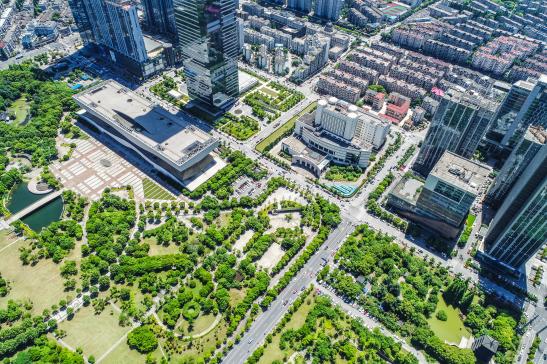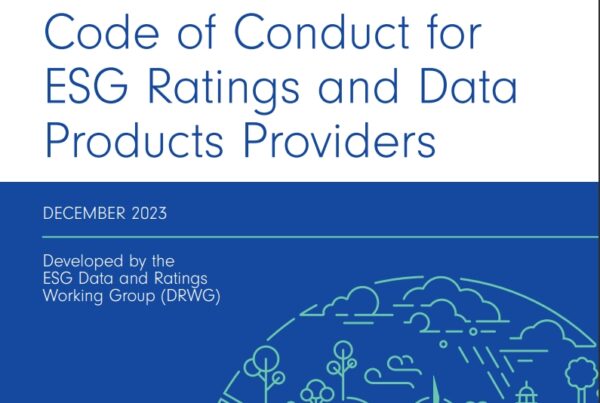Future Community, Sustainable Urbanism, and the Future of Cities
Urban planners from different eras have grand visions of the future of cities. However, many times, when these utopian visions are put into practice under completely different conditions than the original ideas, they produce “bizarre and even disastrous results.”
Nevertheless, humans have never stopped sketching out blueprints for cities. Various views and theories collide and intersect, and a variety of cases are born from them. Their success or failure can only be judged by future generations. After all, generation after generation can only gain experience through long-term practice.

As we move past the second decade of the 21st century, urban development vision has become a planning strategy. Planning for the future influences the direction of cities and their position in international competition. Many cities around the world have introduced medium- to long-term development strategies that value low-carbon, innovation, fairness, and happiness. They focus on the coordinated development of large cities and surrounding areas, emphasizing the improvement of government governance capabilities and the transformation of governance models.
For example, New York plans to become a “strong and fair New York” around 2050, divided into four major themes: vibrant New York, just and equal New York, sustainable New York, and resilient New York.
The “Greater Paris Plan 2030” focuses on sustainable development to enhance Paris’s attractiveness. The plan incorporates the entire Paris region into a new development model with specific measures such as connection and architecture to achieve a more closely connected and sustainable region; polarization and balance to establish a more diverse, livable, and attractive area; protection and improvement to develop a more vibrant and greener region.
What else besides growth?
In addition to beautiful ideas, the bottlenecks and crises in urban development have also brought about many reflections. In a TED speech in 2018, British economist Kate Raworth pointed out that a healthy economy should aim for prosperity rather than growth. “Growth is a concept of the 20th century. People in the 21st century should have new imagination: to meet everyone’s basic needs without overdeveloping Earth’s resources.” In her book “Doughnut Economics,” Raworth describes her vision in more detail. She constructs a “doughnut model” to describe a more just and inclusive development model and calls for creating an economy that can simultaneously solve scarcity problems and overload problems.

The Doughnut of social and planetary boundaries – Kate Raworth
In April 2020, Amsterdam City Hall announced that it would use the “doughnut model” as a guiding principle for its “2020-2025 circular strategy” for urban policy and all public policies. Amsterdam became the first city in the world to conduct this urban experiment. Van Doornick, Amsterdam’s deputy mayor and one of the decision-makers behind this policy said: “After (the pandemic) outbreak, it is impossible to return to normal. It is better to work hard in the direction we want during this historical crack.” The doughnut theory is not only about sustainable material exchange but also about human well-being, dignity, rights, social justice, and community relations.
The vision of “doughnut” did not emerge accidentally in Amsterdam. This city has tried to break through the development model of “only growth” in the past. From “circular economy” and “local ecology” developed ten years ago to “local society” emphasizing public participation and community power; from strict Airbnb rental regulations enacted by governments to residents vetoing airport expansion plans; Amsterdam’s attitude towards sustainable anti-growth is visible.
After neoliberalism and infinite growth logic almost dominated half of the world for more than half a century, cities represented by Amsterdam are trying to find a completely new development path – turning rapid growth into real prosperity. In addition to leading Amsterdam’s sustainable development plan, Raworth also established a global city network called C40 that introduced workshops on “doughnut models.” This network covers cities in Europe, America, China, Southeast Asia, Africa and other regions. She hopes to promote Amsterdam’s experience and “establish a toolkit that can be replicated by other cities around the world.” Urban development is gradually transitioning from an incremental era to an inventory era. The focus of development has gradually shifted from new city construction to improving old city functions, healthy urban operations, improving living standards for residents. Slowing economic growth rates, high housing prices, overloaded traffic, deteriorating environment – all these signs remind us: standing at this node point we need to abandon our past ways of thinking about urban futures as well as our own futures that are closely related.
The Future Community vs. Sustainable Urbanism
“Future community” is a concept that focuses on creating sustainable and livable communities that meet the needs of people. It is a development approasch that aims to provide a high-quality living environment that is human-centered, ecological, and digital. The initiative emphasizes the importance of harmony, green intensity, and smart sharing, and it is based on the principles of consumption-based accounting.
The concept of “future communities” is intricately linked to the burgeoning field of sustainable urbanism. This planning approach prioritizes the creation of cities that exhibit environmental, social, and economic sustainability. Future communities function as a response to contemporary and anticipated challenges of urbanization, such as scarcity of land resources, limited employment opportunities, and the universal yearning for improved quality of life.
This initiative advocates for the development of cutting-edge technologies and innovative approaches to foster sustainable and livable communities. Central to this vision is the emphasis on community engagement. By prioritizing participation in the planning and development process, future communities aim to empower residents and stakeholders, fostering a sense of ownership and shared responsibility for the well-being of the urban environment.
The “Future Communities” framework serves as an invaluable guiding force for Sust.In. It empowers us to craft pioneering solutions that empower organizations and individuals to curtail their carbon emissions and actively partake in the global campaign to combat climate change. By embracing the core tenets of “Future Communities,” cities can progressively metamorphose into sustainable, liveable, and enjoyable habitats. Sustainable Intelligence is steadfast in its commitment to forging a sustainable future where innovation harmoniously merges with environmental stewardship, with “Future Communities” serving as a pivotal instrument in the realization of this mission.





